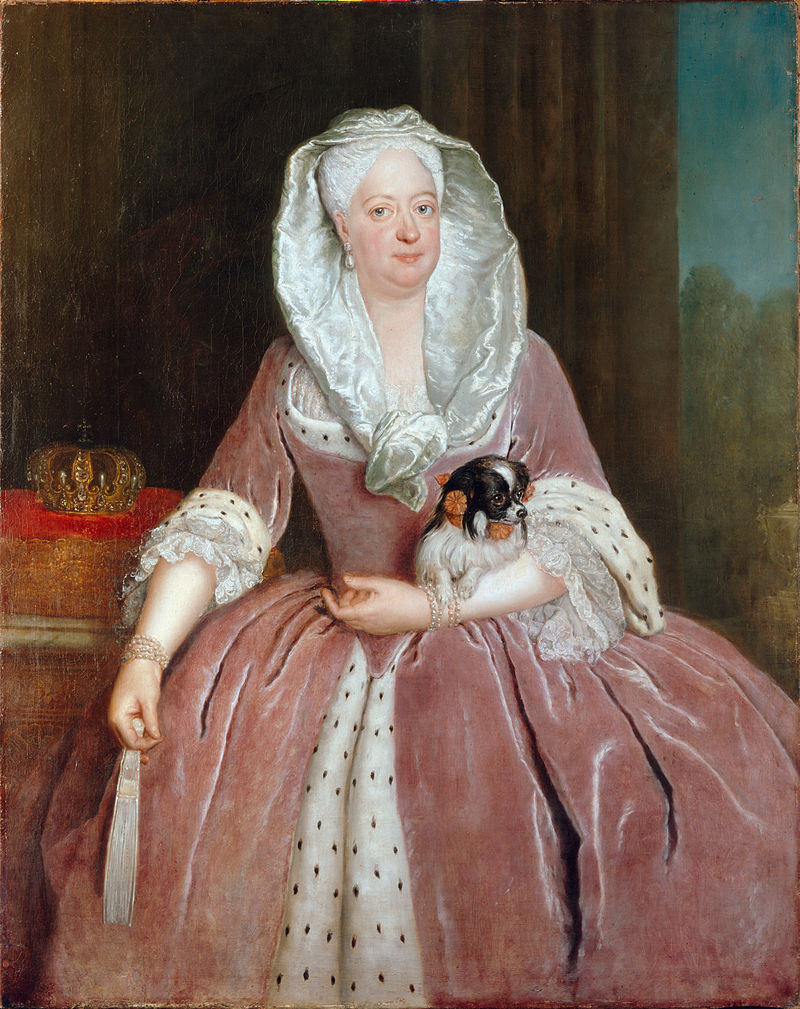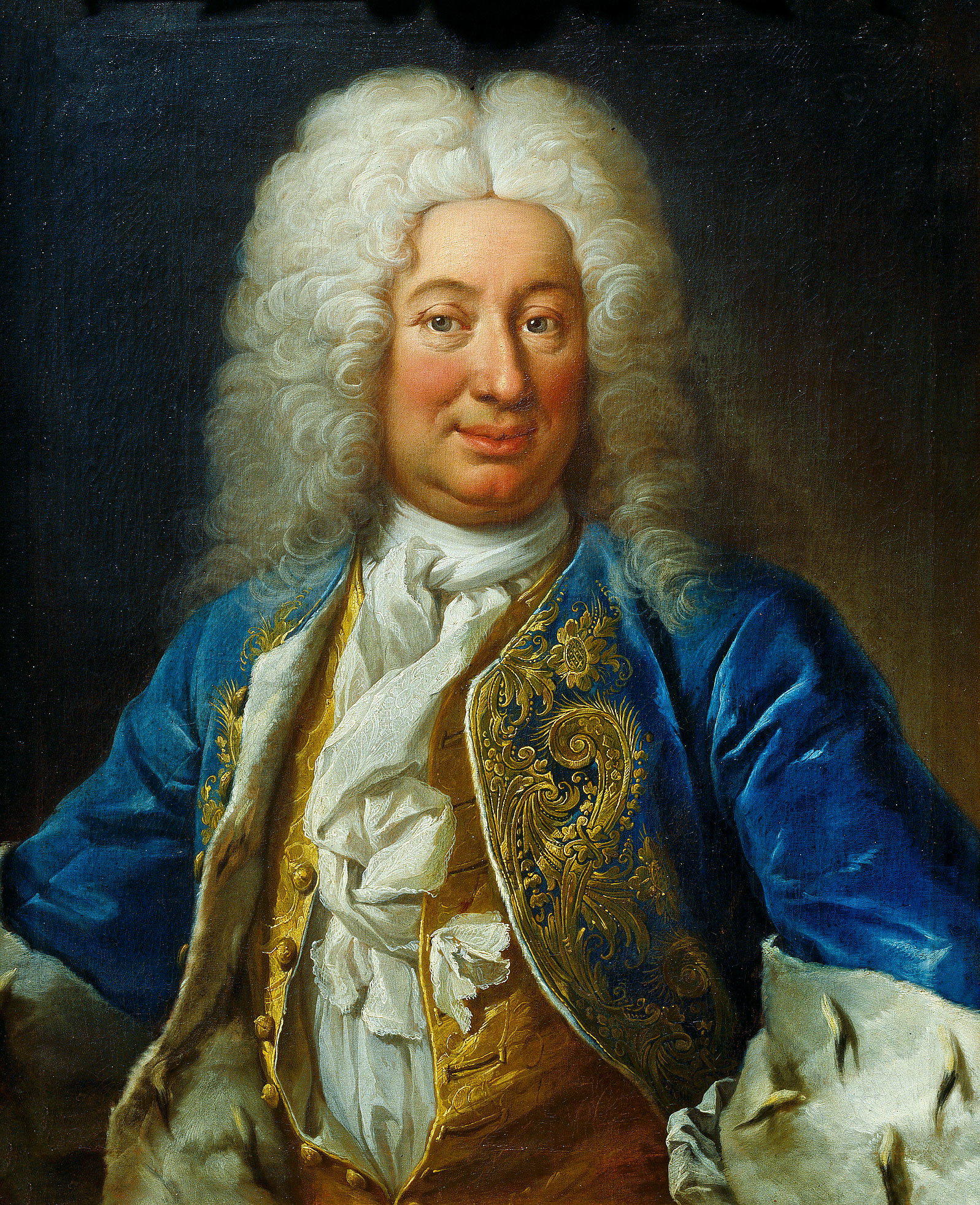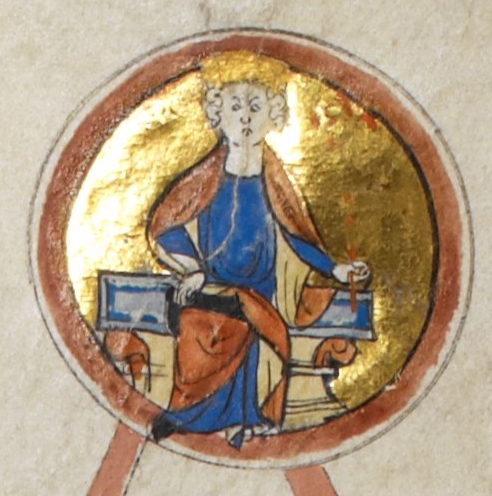© Unofficial Royalty 2025

Sophia Dorothea of Hanover, Queen of Prussia; Credit – Wikipedia
March 26, 1662 – Birth of Marie Louise of Orléans, first wife of King Carlos II of Spain, at the Palais-Royal in Paris, France
The daughter of Philippe I, Duke of Orléans and Henrietta of England, and the granddaughter of King Charles I of England and King Louis XIII of France, Marie Louise married Carlos II, King of Spain in 1679. Carlos II was from the House of Habsburg, which ruled over Austria, Spain, and their many territories, and was notorious for its inbreeding. Carlos suffered from physical and mental developmental disabilities. His very pronounced Habsburg jaw was so severe that he swallowed his food without thoroughly chewing. Marie Louise and Carlos’ childless marriage lasted ten years. After taking a ride on horseback, Marie Louise began to feel strong pain in her stomach. She died the next day, aged 26, on February 12, 1689, at the Royal Alcázar of Madrid in Spain. Although many reasons were considered as causes of Marie Louise’s death including poison, it is most likely that she died from appendicitis, a fatal infection until the mid-nineteenth century, when the advent of anesthesia and new surgical techniques allowed for successful appendectomies.
Unofficial Royalty: Marie Louise of Orléans, Queen of Spain
March 26, 1676 – Death of Johanna Beatrix von Dietrichstein, Princess of Liechtenstein, wife of her maternal uncle Karl Eusebius, Prince of Liechtenstein, in Brno, Moravia, now in the Czech Republic; buried in the Old Crypt at Chuch of the Nativity of the Virgin Mary in Vranov, Moravia, now in the Czech Republic
The daughter of Maximilian, 2nd Prince of Dietrichstein, Baron of Hollenburg, Finkenstein, and Thalberg and his first wife Princess Anna Maria of Liechtenstein, Johanna Beatrix married her thirty-three-year-old maternal uncle Karl Eusebius, Prince of Liechtenstein in 1644. The couple had nine children. Karl Eusebius began to invest in a personal art collection and became one of the preeminent Central European art collectors of his time. He laid the foundation for the Liechtenstein Museum, formerly a private art museum in Vienna, Austria. Johanna Beatrix predeceased Karl Eusebius, dying at the age of fifty, on March 26, 1676, in Brno, Moravia, now in the Czech Republic.
Unofficial Royalty: Johanna Beatrix von Dietrichstein, Princess of Liechtenstein
March 26, 1687 – Birth of Sophia Dorothea of Hanover, Queen of Prussia, daughter of the future King George I of Great Britain, wife of King Friedrich Wilhelm I of Prussia, in Hanover, Principality of Callenberg now in Lower Saxony, Germany
Sophia Dorothea was eight years old when her disgraced mother was divorced and banished for the rest of her life. She was raised by her paternal grandmother Sophia, Electress of Hanover at Herrenhausen, the Hanover home. She married her first cousin, Crown Prince Friedrich Wilhelm of Prussia, son of Friedrich, King I of Prussia. Sophia Dorothea and Friedrich Wilhelm had met as children as they shared a grandmother, Sophia, Electress of Hanover, and they had disliked each other ever since. Their interests were very different, and Friedrich Wilhelm contemplated divorcing Sophia Dorothea the same year they were married, but nothing ever came of it. Sophia Dorothea became Queen of Prussia in 1713 when her husband acceded to the Prussian throne.
Unofficial Royalty: Sophia Dorothea of Hanover, Queen of Prussia
March 26, 1819 – Birth of Prince George, 2nd Duke of Cambridge, son of Prince Adolphus, Duke of Cambridge, at Cambridge House in the Kingdom of Hanover, now in Lower Saxony, where his father was serving as Viceroy of Hanover
Full name: George William Frederick Charles
George was a male-line grandson of King George III, a first cousin of Queen Victoria, and the maternal uncle of Mary of Teck, the wife of King George V. He was born amidst the race for an heir to the British throne in the third generation. The death of Princess Charlotte of Wales in childbirth in 1817 left King George III without any legitimate grandchildren. Prince George was born two months before the eventual heir, Alexandrina Victoria (Queen Victoria), who was ahead of her cousin in the line of succession by being the child of King George III’s fourth son. George was the son of King George III’s seventh son. In 1847, George married actress Louisa Fairbrother in contravention of the 1772 Royal Marriages Act. The three children born of the marriage were considered illegitimate, and Louisa was not styled and titled as befitted the wife of George. Instead, Louisa was first known as Mrs. Fairbrother and later as Mrs. FitzGeorge, and her existence was ignored by his first cousin, Queen Victoria.
Unofficial Royalty: Prince George, 2nd Duke of Cambridge
March 26, 1826 – Birth of Elisabeth of Saxe-Altenburg, Grand Duchess of Oldenburg, wife of Peter II, Grand Duke of Oldenburg, in Hildburghausen, Duchy of Saxe-Hildburghausen, now in Thuringia, Germany
Full name: Elisabeth Pauline Alexandrine
In 1852, Elisabeth married the future Peter II, Grand Duke of Oldenburg, and they had two sons. As Grand Duchess, Elisabeth oversaw the establishment of the Elisabeth Children’s Hospital and was the patron of numerous charities and organizations focused on the well-being of children and the less fortunate. Much of this was done through her Elisabeth Foundation, established at the time of her marriage using funds given by her father. Elisabeth died on February 2, 1896, at the age of 70.
Unofficial Royalty: Elisabeth of Saxe-Altenburg, Grand Duchess of Oldenburg
March 26, 1868 – Birth of King Fuad I of Egypt, born Ahmed Fuad at the Giza Palace in Cairo, Egypt
Ahmed Fuad was Sultan of Egypt from 1917 until 1922, when Egypt gained its independence from the United Kingdom. He became King Fuad I of Egypt on March 15, 1922, and reigned until his death in April 1936. His full title was King of Egypt and Sovereign of Nubia, the Sudan, Kordofan and Darfur.
Unofficial Royalty: King Fuad I of Egypt
March 26, 1936 – Death of Adolf II, former Prince of Schaumburg-Lippe and his wife in an airplane crash in Zumpango, Mexico; buried in the mausoleum in the park of Schloss Bückeburg in Bückeburg, Germany
Adolf was the last reigning Prince of Schaumberg-Lippe, abdicating on November 15, 1918. He and his wife, actress Elisabeth Franziska (Ellen) von Bischoff-Korthaus, died in an airplane crash in Zumpango, Mexico. Adolf and Ellen were killed along with eight other passengers from Germany, Austria, and Hungary, and four crew members. Their plane developed engine trouble and crashed between the volcanoes Popocatepetl and Ixtaccihuatl as they were flying from Mexico City, Mexico to Guatemala City, Guatemala.
Unofficial Royalty: Adolf II, Prince of Schaumburg-Lippe
Unofficial Royalty: Ellen Bischoff-Korthaus, Princess of Schaumburg-Lippe
March 26, 1949 – Birth of Margareta of Romania, Custodian of the Romanian Crown, in Lausanne, Switzerland
Margareta, Custodian of the Romanian Crown is the eldest daughter of King Miha (Michael) I of Romania, who was forced to sign a document of abdication by the Communist regime and then was forced to leave Romania. Margareta has claimed the headship of the House of Romania since her father died in 2017 and is formally styled as Her Majesty Margareta, Custodian of the Romanian Crown.
Unofficial Royalty: Margareta of Romania, Custodian of the Romanian Crown
March 26, 1982 – Birth of Crown Prince Leka II of the Albanians, pretender to the throne of Albania, at Sandton Clinic in Johannesburg, South Africa
Leka is the current claimant to the former throne of Albania. He is the only child of Crown Prince Leka I of the Albanians, who was also the claimant to the throne of Albania. In 2002, the Royal Family returned to Albania at the invitation of the Albanian government. Upon his father’s death in 2011, Leka became the Pretender to the former Albanian throne. In 2016, Leka married Elia Zaharia, an Albanian actress and singer, and the couple had one daughter. In 2024, Leka and Elia were divorced.
Unofficial Royalty: Crown Prince Leka II of Albania
March 26, 2015 – Remains of King Richard III of England reburied at Leicester Cathedral in England
After his death at the Battle of Bosworth Field, Richard III was buried at Greyfriars Abbey, a Franciscan abbey in Leicester, England. During the Dissolution of the Monasteries, during the reign of King Henry VIII, the abbey church in Leicester, along with Richard’s burial place, was destroyed. In 1975, an article was published in the society’s journal suggesting that Richard’s remains were buried under the Leicester City Council’s parking lot (car park). In 2012, excavation began, and soon skeletal remains were found. The DNA from a direct descendant of Richard’s sister Anne of York and a direct maternal line descendant matched the mitochondrial DNA extracted from the remains. This confirmed that the remains were those of Richard III. The remains of Richard III were reburied at Leicester Cathedral on March 26, 2015. Three members of the Royal Family, The Countess of Wessex (now The Duchess of Edinburgh) and The Duke and Duchess of Gloucester, attended the reburial. It was fitting that the Duke of Gloucester attended the reburial as his name is also Richard and Richard III was also a Duke of Gloucester. The Duke of Gloucester is the Patron of The Richard III Society.
Unofficial Royalty: King Richard III of England
Unofficial Royalty: Richard III – Lost and Found
This article is the intellectual property of Unofficial Royalty and is NOT TO BE COPIED, EDITED, OR POSTED IN ANY FORM ON ANOTHER WEBSITE under any circumstances. It is permissible to use a link that directs to Unofficial Royalty.











